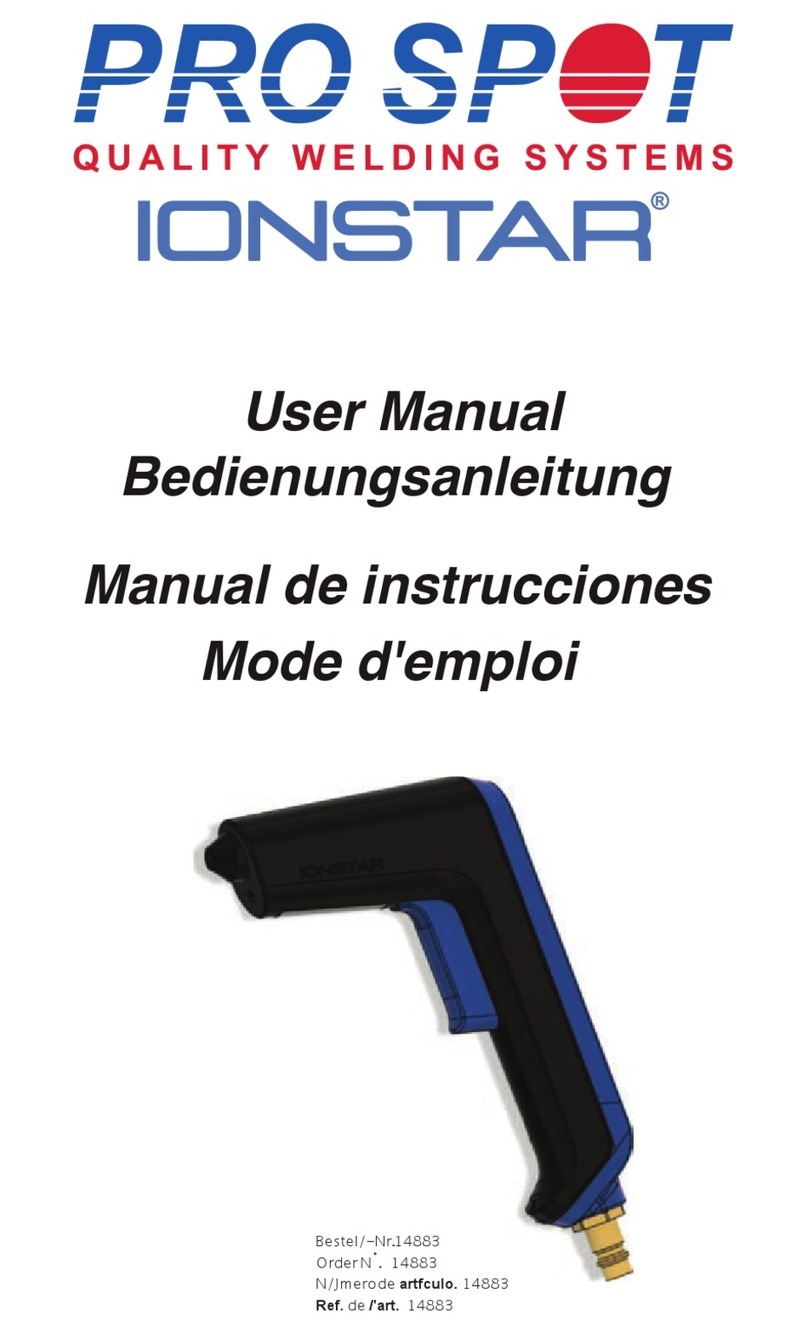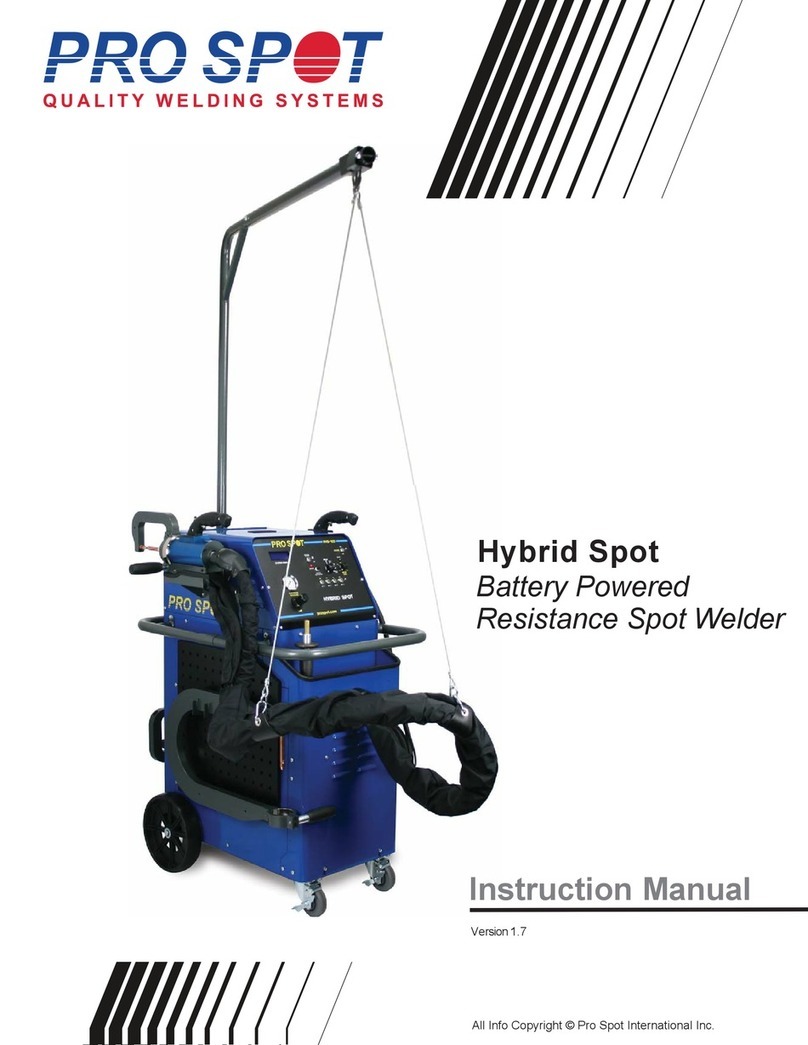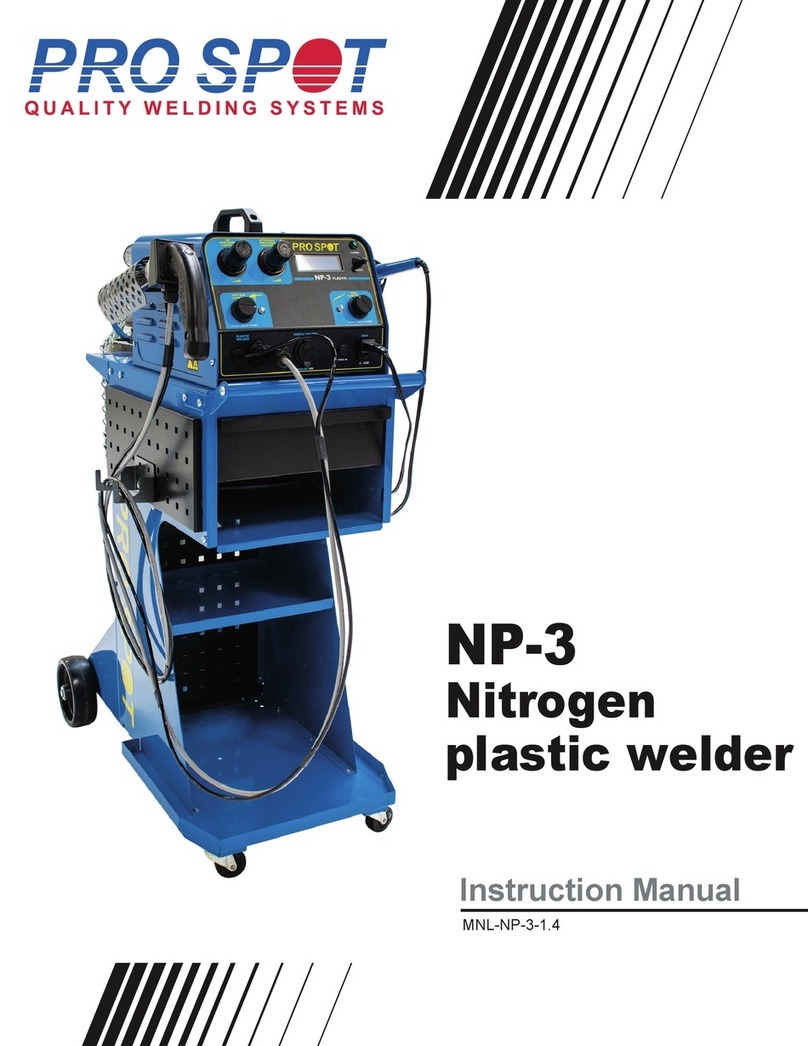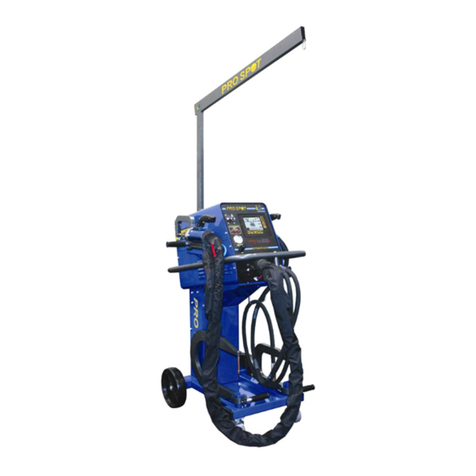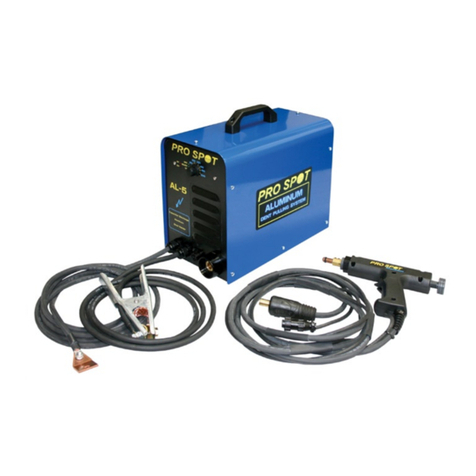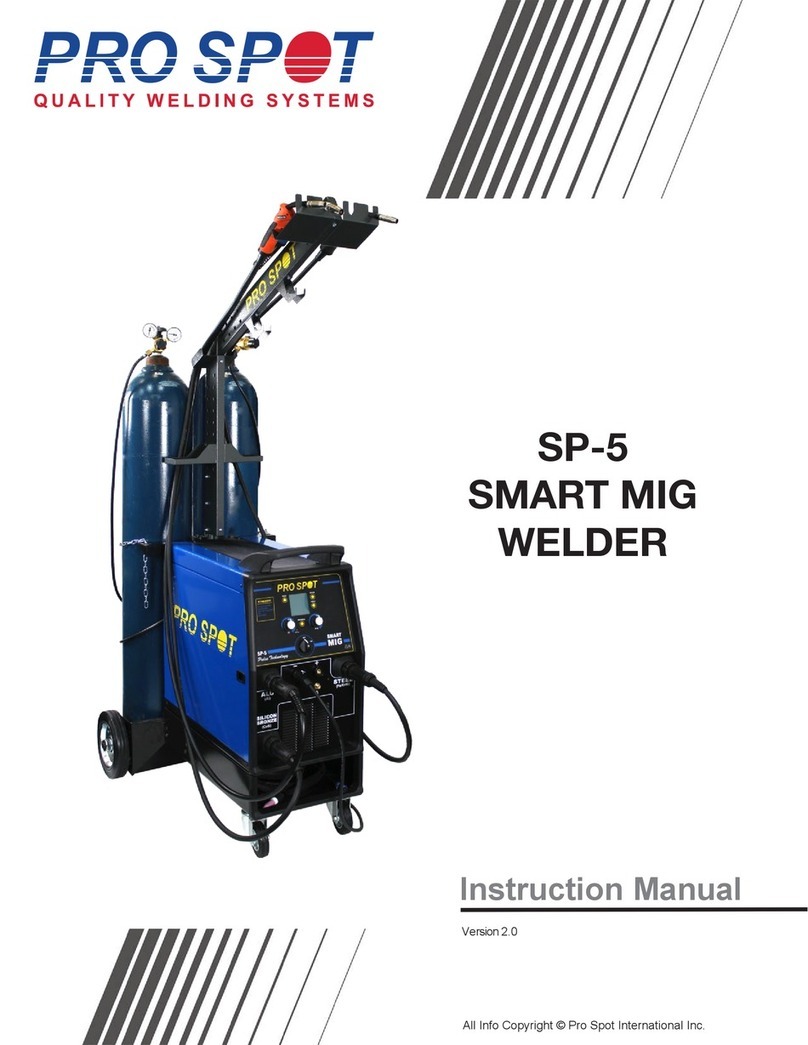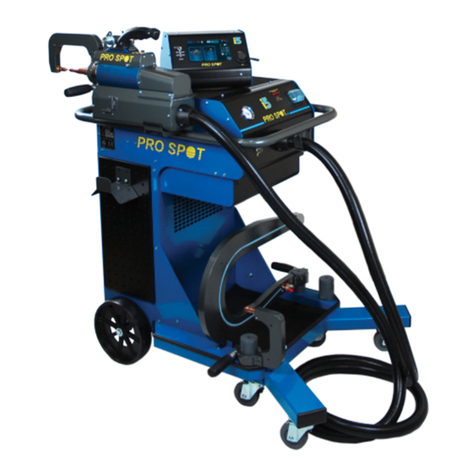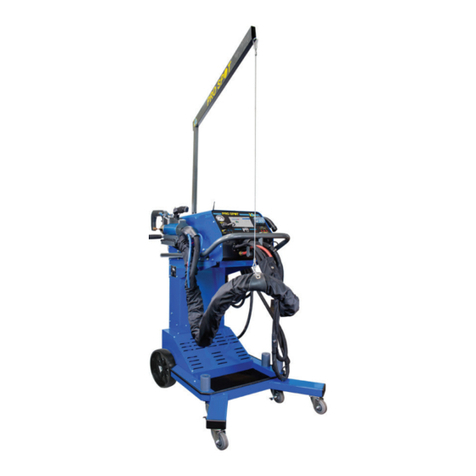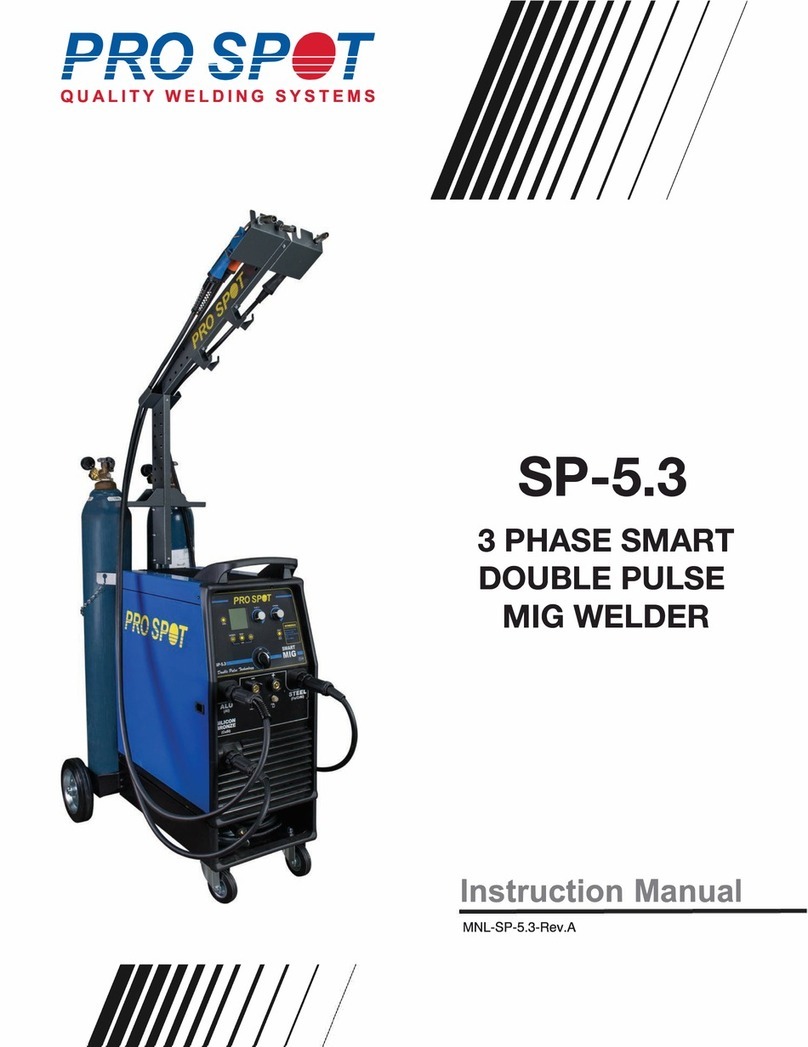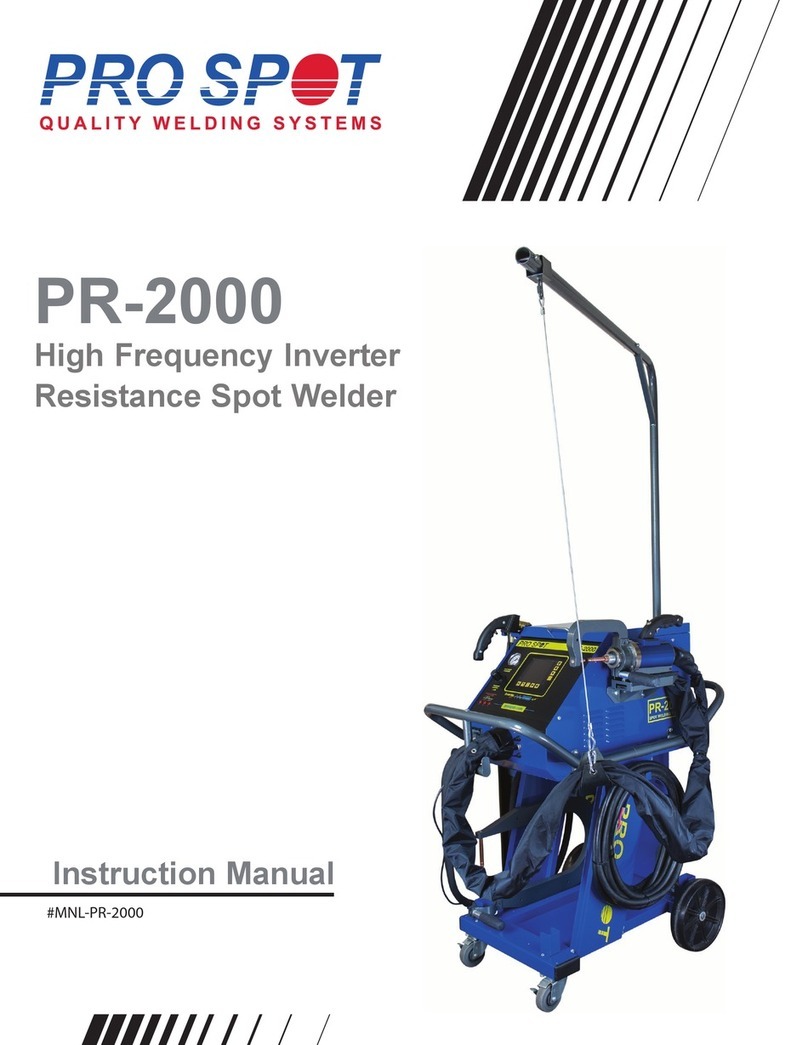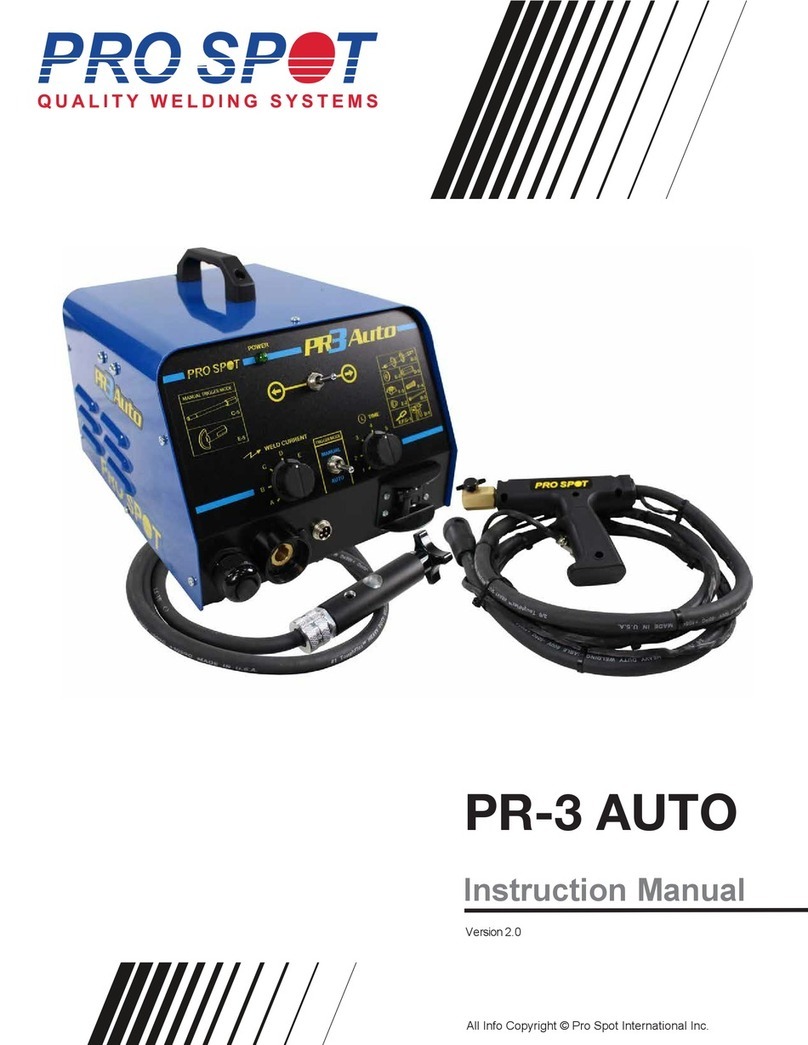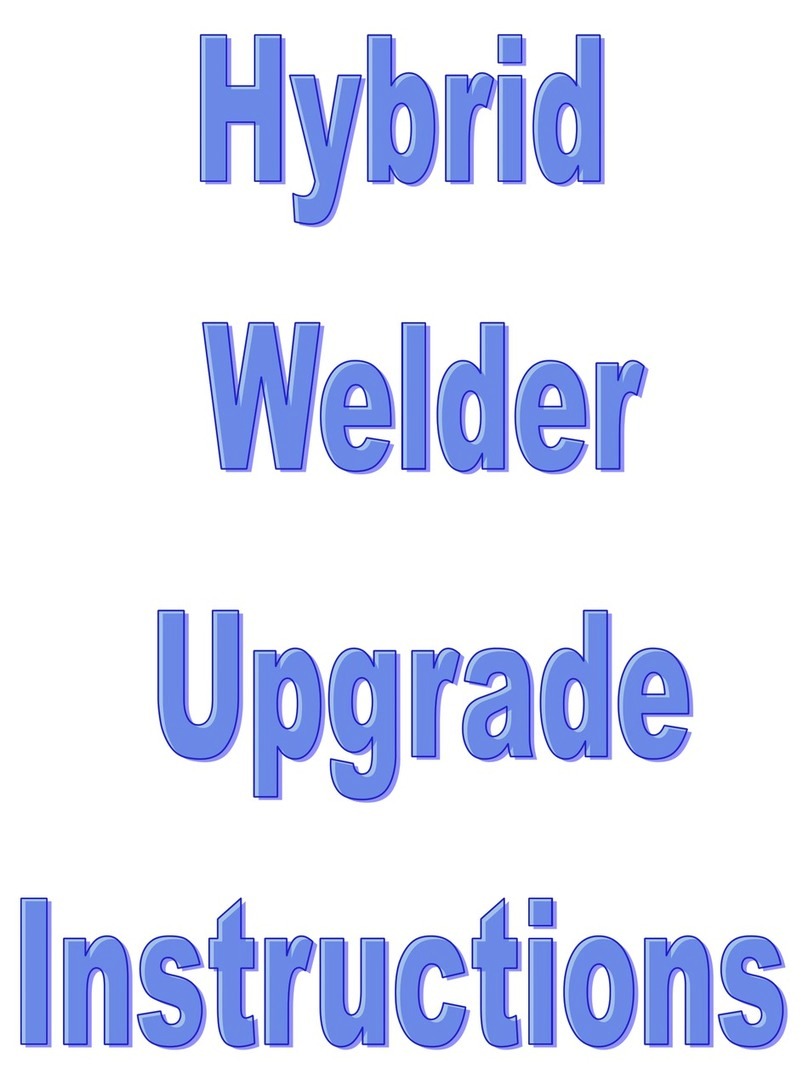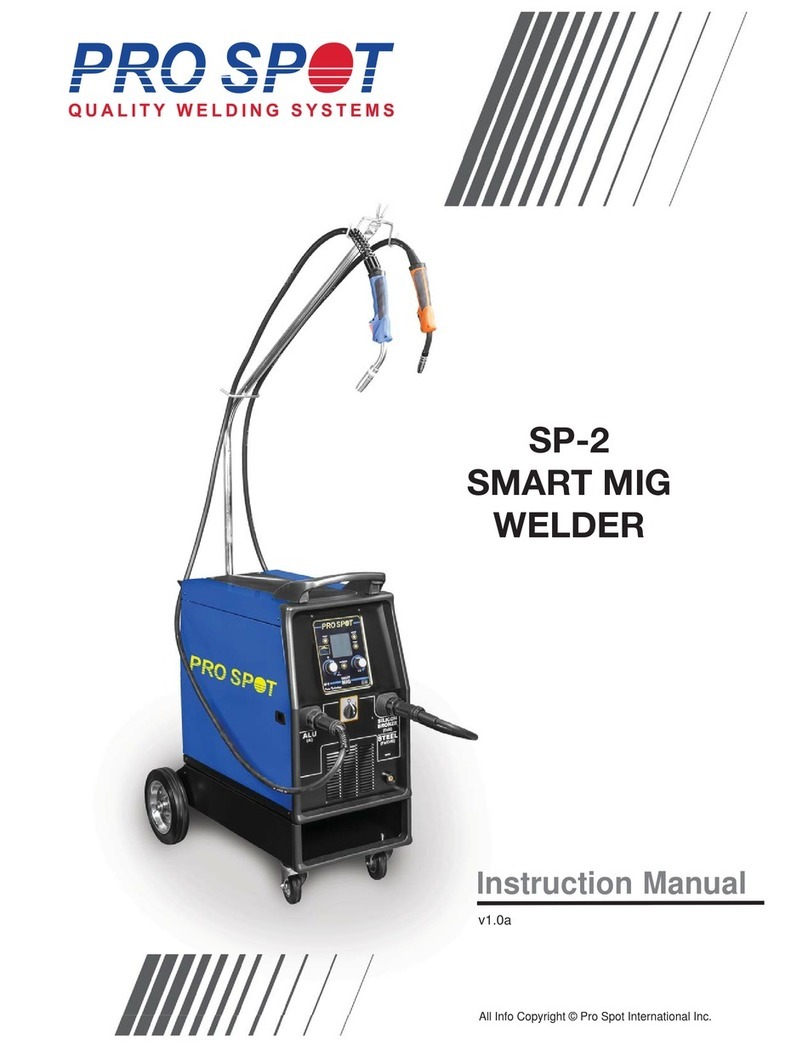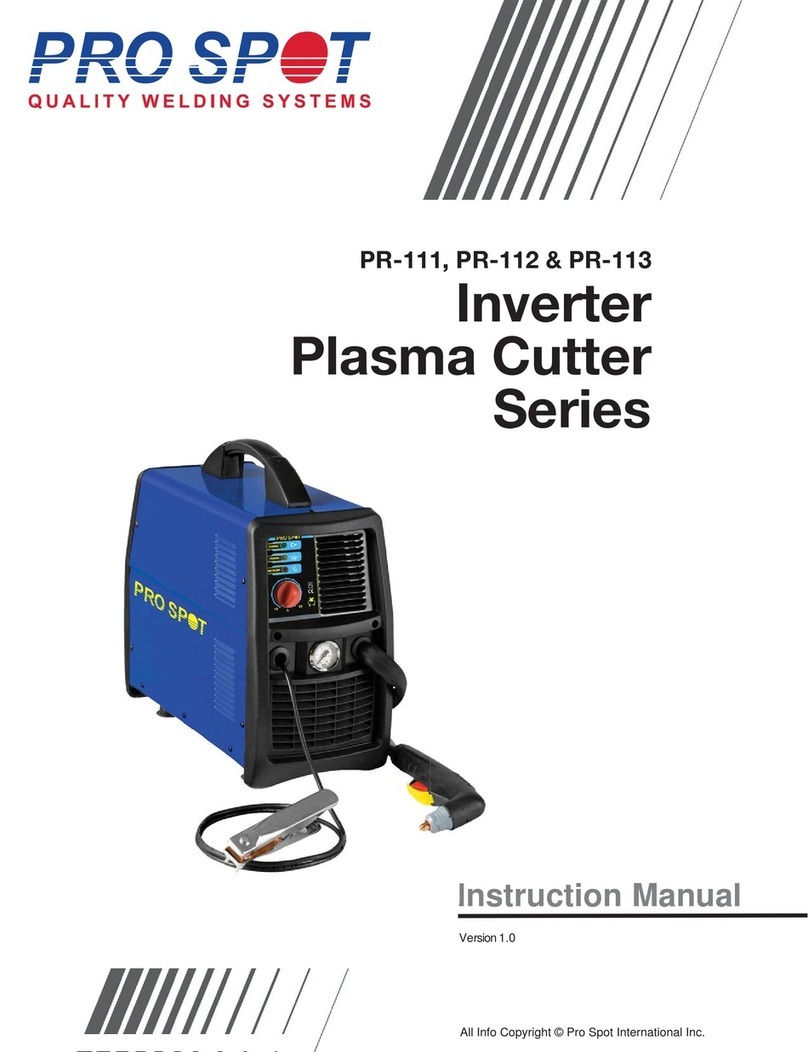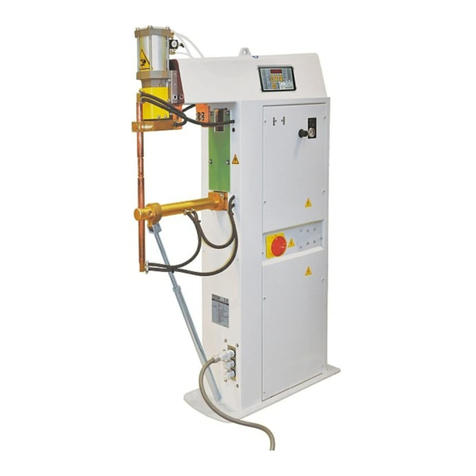6
6 SAFETY PRECAUTIONS
6.1 Fire ·Avoid causing fire because of sparks,
slag, hot metal or pieces.
·Make sure that suitable fire-fighting
equipment is available close to welding area.
·Remove all flammable and combustible material from
the welding area and its surrounding (32 ft minimum).
·Do not weld containers of combustible or flammable
material, even when empty. These must be carefully
cleaned before being welded.
·Allow the welded material to cool down before touching
it or putting it in contact with combustible or flammable
material.
·Do not weld parts with hollow spaces, containing flam-
mables.
·Do not work under conditions with high concentrations
of combustible vapours, gases, or flammable dust.
· Always check the work area half an hour after welding
so as to make sure that no fire has started.
·Do not keep any combustible material such as lighters
or matches in your pockets.
6.2 Burns
·Wear fire-proof clothing all over your body in order to
protect your skin against burns caused by ultraviolet radi-
ation given off by the arc, and from weld metal sparks and
slag.
·Wear protective clothing-gauntlet gloves designed for
use in welding, hat and high safety-toe shoes. Button
shirt collar and pocket flaps, and wear cuff-less trousers
to avoid entry of sparks and slag.
·Wear helmet with safety goggles and glasses with side
shields underneath, appropriate filter lenses or plates
(protected by clear cover glass). This is a MUST for weld-
ing to protect the eyes from radiant energy and flying
metal. Replace cover glass when broken, pitted, or spat-
tered.
·Avoid oil or greasy clothing. A spark may ignite them.
Hot metal such as electrode stubs and workpieces
should never be handled without gloves.
·First-aid facilities and a qualified first-aid person should
be available for each shift unless medical facilities are
close by for immediate treatment of flash burns of the
eyes and skin burns.
·Ear plugs should be worn when working on overhead or
in a confined space. A hard hat should be worn when oth-
ers work overhead.
·Flammable hair preparations should not be used by
persons intending to weld or cut.
6.3 Fumes
Welding operations give off harmful fumes and
metal dusts which may be hazardous to your
health, therefore:
·Work in a well-ventilated area.
·Keep your head out of fumes.
·In closed areas, use suitable exhaust fans.
·If ventilation is not enough, use breathing sets approved
for this procedure.
·Clean the material to be welded of any solvents or halo-
gen degreasers giving rise to toxic gases. Some clorine
solvents may decompose with the radiation emitted by
the arc, and create phosgene gas.
·Do not weld plated metals or those containing lead,
graphite, cadmium, zink, chrome, mercury or beryllium,
unless you have the proper breathing set.
·The electric arc creates ozone. A long exposure to high
concentrations may cause headaches, nasal, throat and
eye irritation as well as serious congestions and chest
pains.
IMPORTANT: DO NOT USE OXYGEN FOR VENTILATION.
·Gas leaks in a confined space should be avoided.
Leaked gas in large quantities can change oxygen con-
centration dangerously. Do not bring gas cylinders into a
confined space.
·DO NOT WELD where solvent vapors can be drawn into
the welding atmosphere or where the radiant energy can
penetrate to atmospheres containing even minute
amounts of trichloroethylene or perchloroethylene.
6.4 Explosions
Do not weld above or near containers under pres-
sure.
·Do not weld in environments containing explo-
sive dusts, gases or vapours.
This welding machine uses inert gases such as CO2,
ARGON, or a mixture of ARGON + CO2 for the protection
of the arc, thus you should take special precautions:
A) CYLINDERS
·Do not directly connect cylinder to the machine gas
hose without a pressure regulator.
·Handle or use pressure cylinders in conformity with the
existing rules.
·Do not use leaking or damaged cylinders.
·Do not use cylinders which are not well secured.
·Do not carry cylinders without the protection of the
installed valve.
·Do not use cylinders whose content has not been clear-
ly identified.
·Never lubricate cylinder valves with oil or grease.
·Do not put the cylinder in electrical contact with the arc.
·Do not expose cylinders to excessive heat, sparks,
molten slags or flame.
·Do not tamper with the cylinder valves.
·Do not try to loosen tight valves by means of hammers,
keys, or any other object.
·NEVER DEFACE or alter name, number, or other mark-
ings on a cylinder. It is illegal and hazardous.
·Do not lift cylinders off the ground by their valves or
caps, or by chains, slings or magnets.
·Never try to mix any gases in a cylinder.
·Never refill any cylinder.
·Cylinder fittings should never be modified or exchanged.
B) PRESSURE REGULATORS
·Keep pressure regulators in good condition. Damaged
regulators may cause damages or accidents, they should
only be repaired by skilled personnel.
·Do not use regulators for gases other than those for
which they are manufactured.
·Never use a leaking or damaged regulator.
·Never lubricate regulators with oil or grease.
C) HOSES
·Replace hoses which appear damaged.

